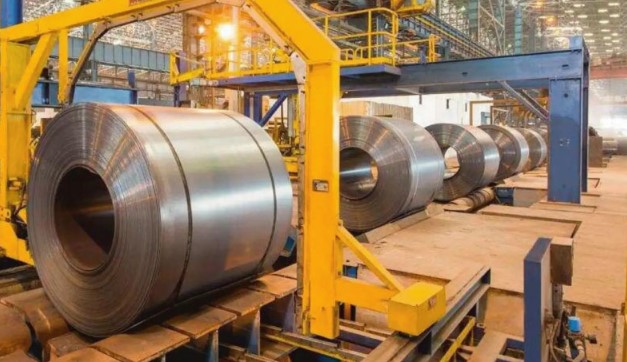
Political but Prudent Budget 2024
- August 8, 2024
- 0
The Budget focused on employment, agriculture, and micro, small and medium enterprises (MSMEs). It is now well accepted that issues related to employment and agriculture significantly influenced the outcome of the last Lok Sabha elections. While a politically elected government is expected to course correct, the shift in focus also makes economic sense. Even though the headline numbers suggest the unemployment rate has come down over the past few years, the quality of employment has remained a concern.
Since employment has to be created in the private sector, the FM announced various measures, with the aim to incentivise hiring in the formal sector, including providing a one-month wage for new entrants in the workforce and supporting Employees Provident Fund Organisation contribution in the manufacturing sector. The government will also support an internship programme in the top 500 companies, which is expected to benefit 10 million youth over the next five years.
The first Budget of the new government was also expected to give the medium-term road map for the Indian economy. The FM did not disappoint on this account. The Budget focused on the nine key areas, including urban development, energy security, infrastructure, and innovation. The Union government is expected to build on announcements in these areas in the coming time to guide growth and development in the country.
Notably, the focus now is on next-generation reforms. “We will formulate an Economic Policy Framework to delineate the overarching approach to economic development and set the scope of the next generation of reforms for facilitating employment opportunities and sustaining high growth,” noted Sitharaman.
- Central State Support
The next generation of reforms will cover all factors of production. To effectively implement some of these reforms, the Union government will need support from states. In this context, to incentivise states in the implementation of reforms, a significant part of the 50-year interest-free loan would be earmarked. The Union government in the current year is providing Rs 1.5 trillion worth of long-term interest-free loans to states. Progress in land and labour reforms will significantly improve the ease of doing business in the country.
- Custom Duties
Among other key announcements, the FM proposed a comprehensive review of the rate structure of Customs duties over the coming six months. The idea is to rationalise and simplify the structure, improve the ease of trade, reduce disputes, and remove duty inversion. Such a review was pending for some time. Higher tariffs and complex duty structure is said to be one of the major impediments in trade, which directly affects India’s export competitiveness. A comprehensive review should help India’s tariff structure to align with the evolving global economic realities. A beginning was made by reducing Customs.
- Fertiliser Subsidy
In the case of fertiliser subsidy, experts said, the actual subsidy expenditure had been consistently falling since 2022-23 due to a drop in international gas (LNG) prices, which is almost 80-85 per cent of the production cost of urea. Gas prices have dropped from their peak of around $30-35 per million metric British Thermal Unit (MMBTU) to around $15-16 per MMBTU. As the gas prices dropped, the cost of producing urea has also come down, and with it its subsidy expenditure from the government.
- Internship Scheme for Industry
To strengthen the link between industry and academia, the Finance Minister announced a comprehensive internship scheme at a total cost of Rs 63,000 crore for providing internship opportunities at 500 top companies to 10 million youth over the next five years. “They will gain exposure for 12 months to real-life business environments, varied professions and employment opportunities,” she said. “An internship allowance of Rs 5,000 per month along with a one-time assistance of Rs 6,000 will be provided. Companies will be expected to bear the training cost and 10 per cent of the internship cost from their CSR funds.”
- Agricultural Research
The review of agricultural research will focus on raising productivity and developing climate resistant seed varieties, for which funding will be provided to the private sector and experts will oversee the conduct of this research.
- Capital Gains
Finance Minister Nirmala Sitharaman on Tuesday announced major changes in the capital gains tax regime on various assets, including increasing short-term and long-term capital gains tax on equities. While long-term capital gains (LTCG) on all financial and non-financial assets will now be taxed at 12.5 per cent, short-term capital gains (STCG) booked in stocks and equity mutual funds will be taxed at 20 per cent compared to 15 per cent earlier.
LTCG on non-financial assets like property will also be taxed at 12.5 per cent, against the earlier 20 per cent, post indexation if held for more than three years. The Budget proposes to do away with the indexation benefits (which factored in inflation to soften the tax incidence) available for long-term assets, including property.
- Real Estate
The real estate sector received mixed signals from Budget 2024 after the Centre announced a higher allocation towards the urban housing scheme but withdrew the indexation benefits on sale of property.
For the rural sector, the Union Budget reiterated the Interim Budget announcement of building 20 million new houses over the next five years with an enhanced allocation of Rs 2lakh per unit from Rs 1, 20,000 a jump of almost 67 per cent.
Finance Minister Nirmala Sitharaman allocated ₹10 trillion, including a central assistance of ₹2.2 trillion, for the Pradhan Mantri Awas Yojana (Urban). This will help meet the housing requirements of 10 million urban poor and middle-class families over five years.
With a target of providing homes to 10 million families over the next five years, this initiative translates into approximately 2 million houses annually, marking a substantial increase from the previous scheme.
This surge in construction activity is expected to boost demand for building materials and rejuvenate related industries such as cement, steel, home appliances, Plywood, MDF and other wood products.
- Abolition of Angle Tax
Tax benefits have been announced for startups and their investors, such as scrapping the contentious angel tax for all classes of investors and aligning capital gains tax rates for listed equity with those for unlisted equity.
Angel tax, officially Section 56(2) (viib) in the Income Tax Act, applies to unlisted companies when they raise capital by issuing shares to investors at a price exceeding its fair market value. The excess amount is treated as income and taxed at 30.9 per cent.
Introduced in 2012, angel tax aimed to prevent tax avoidance and fund misuse. It is so called because it significantly affects angel investment in startups. It was initially applicable to local resident investors but its ambit was expand as part of the government’s anti-tax avoidance move.
Angel tax aside, the Budget has cut the long-term capital gains tax rate for financial assets to 12.50 per cent from 20 per cent. The angel-tax move has been hailed by startups and investors.
👇 Please Note 👇
Thank you for reading our article!
If you don’t received industries updates, News & our daily articles
please Whatsapp your Wapp No. or V Card on 8278298592, your number will be added in our broadcasting list.
[/vc_column_text]


































































